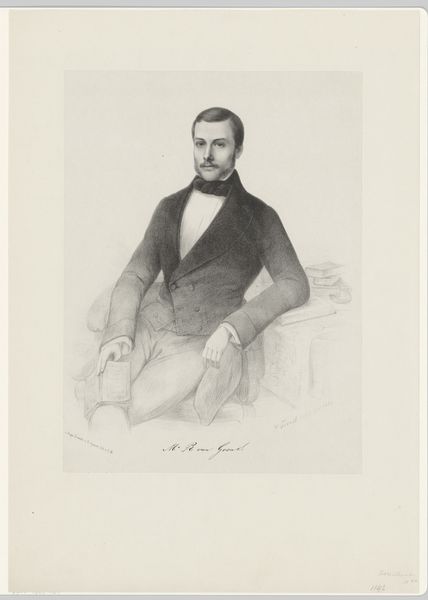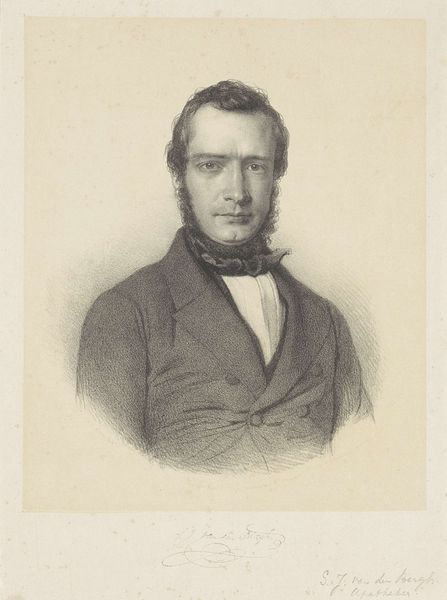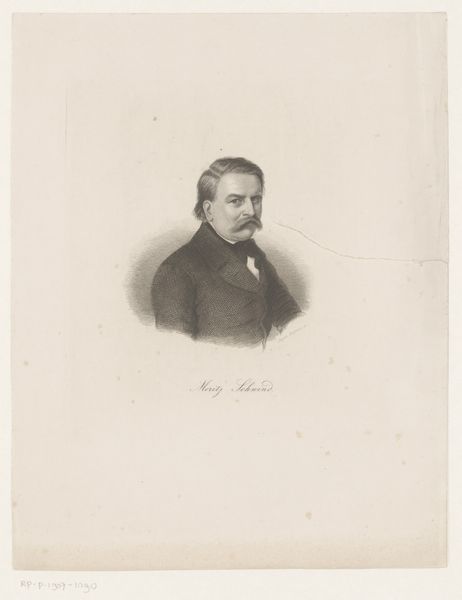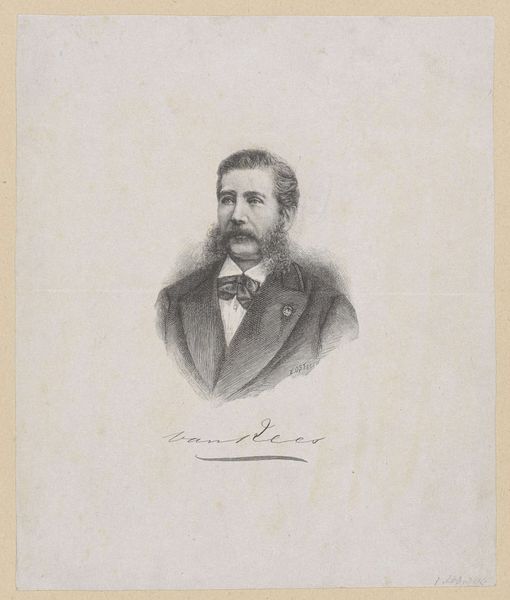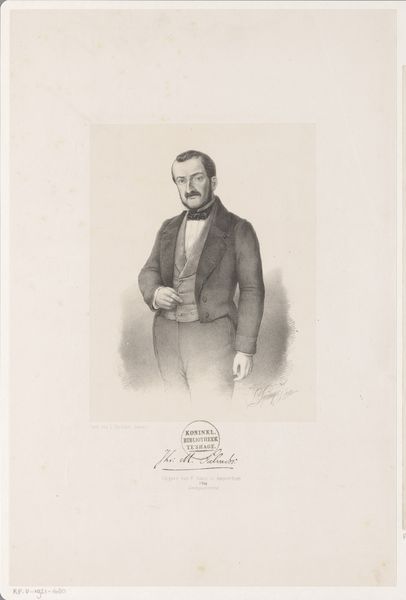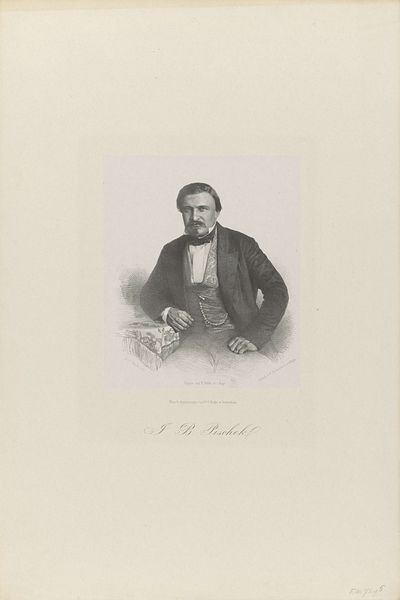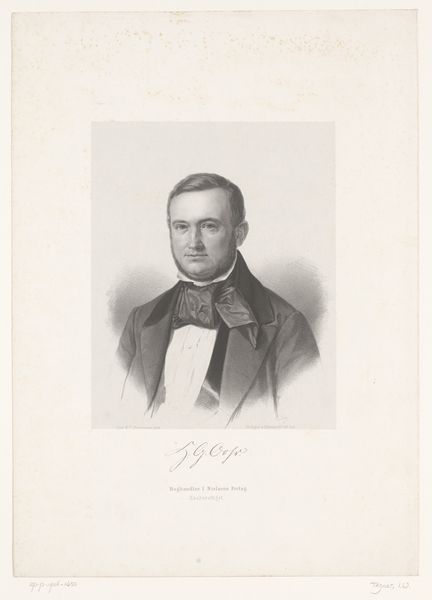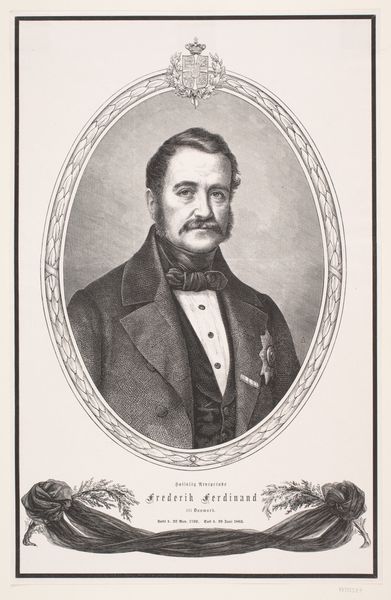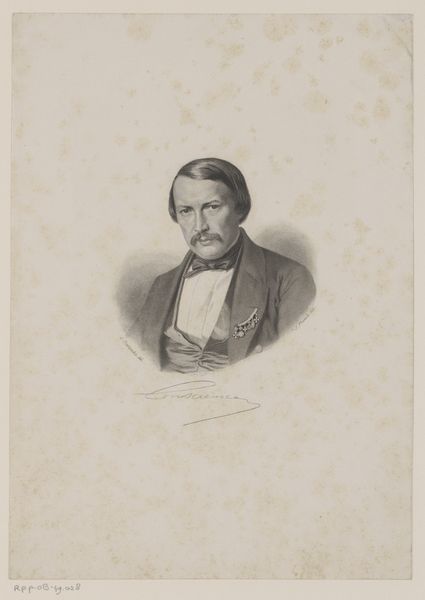
drawing, pencil
#
portrait
#
drawing
#
caricature
#
historical photography
#
pencil
#
academic-art
Dimensions: height 220 mm, width 165 mm
Copyright: Rijks Museum: Open Domain
Editor: This is "Portret van Mozes Salvador" created sometime between 1832 and 1888 by Theodor Brüggemann. It's a pencil drawing. The sitter has an almost severe gaze, doesn't he? How would you interpret this piece? Curator: Well, let’s consider the materials and labor involved. Pencil drawings, though seemingly simple, require a particular kind of paper production and graphite mining. How accessible would these materials have been to different classes in the mid-19th century? This wasn't just a matter of artistic skill; it was also about access to resources. Think of the societal structures implied by who could afford to have their portrait rendered this way. Editor: That’s a good point. So, you’re saying that the drawing itself is tied to production and class? Curator: Precisely. And beyond that, how does the production of images like this compete with the rise of photography? Is it an attempt to retain a certain artisanal value, or a reflection of differing production chains within image-making itself? This isn't just a likeness; it's a material object embedded in a specific network of production and consumption. Editor: It’s fascinating to consider how the drawing connects to the broader economy of art making at that time, almost like a tug-of-war between old and new means of portraiture. Curator: Indeed. Reflecting on the economic infrastructure that enabled the artwork, reveals layers beyond its aesthetic appearance. Editor: This has really shifted how I see portraiture; it's more than just representation!
Comments
No comments
Be the first to comment and join the conversation on the ultimate creative platform.
